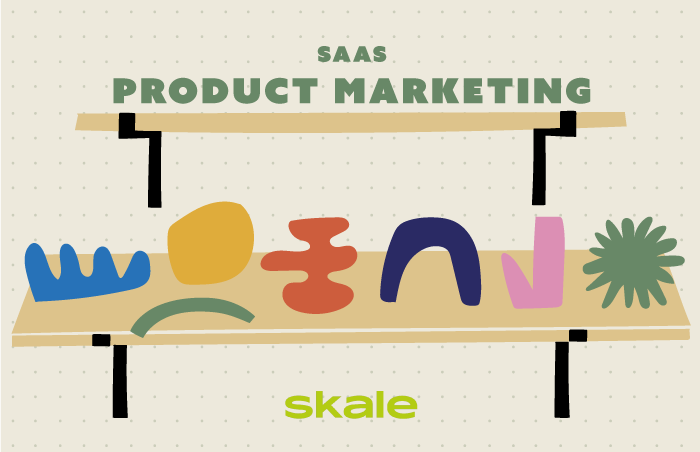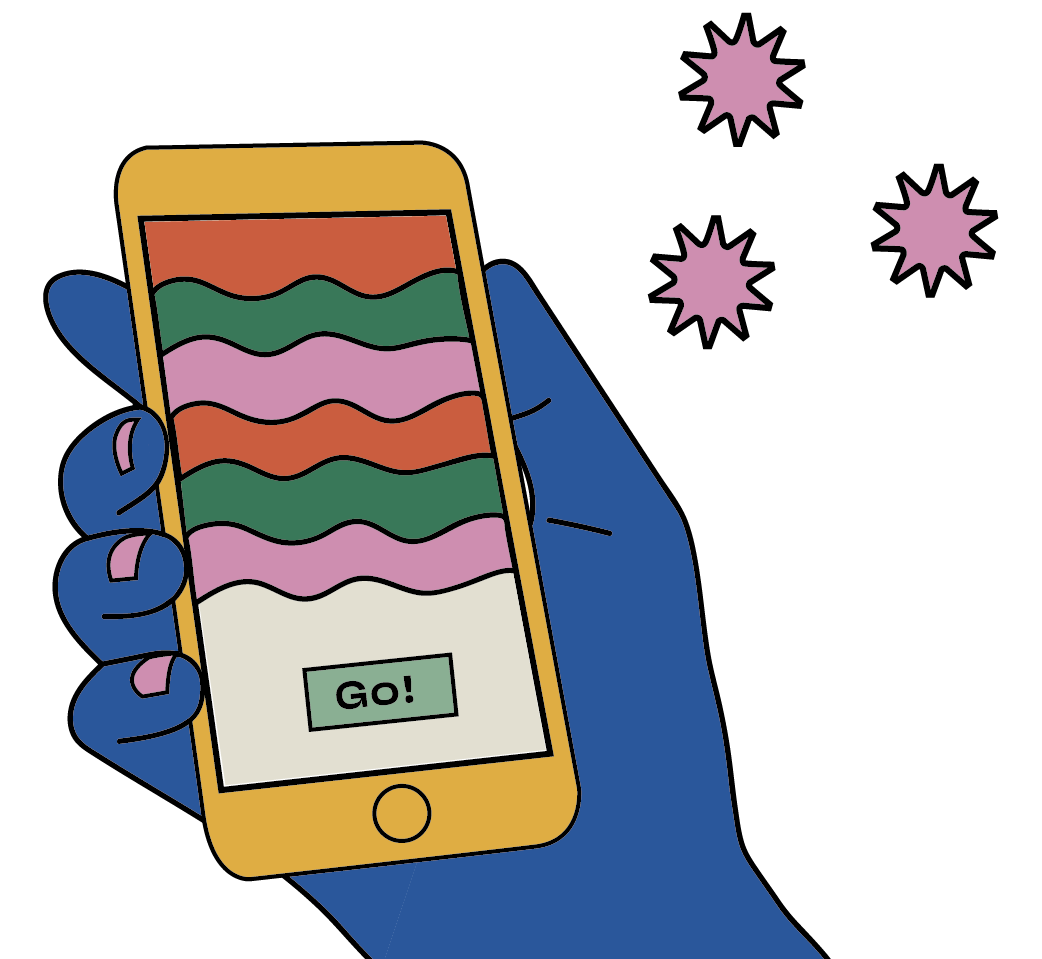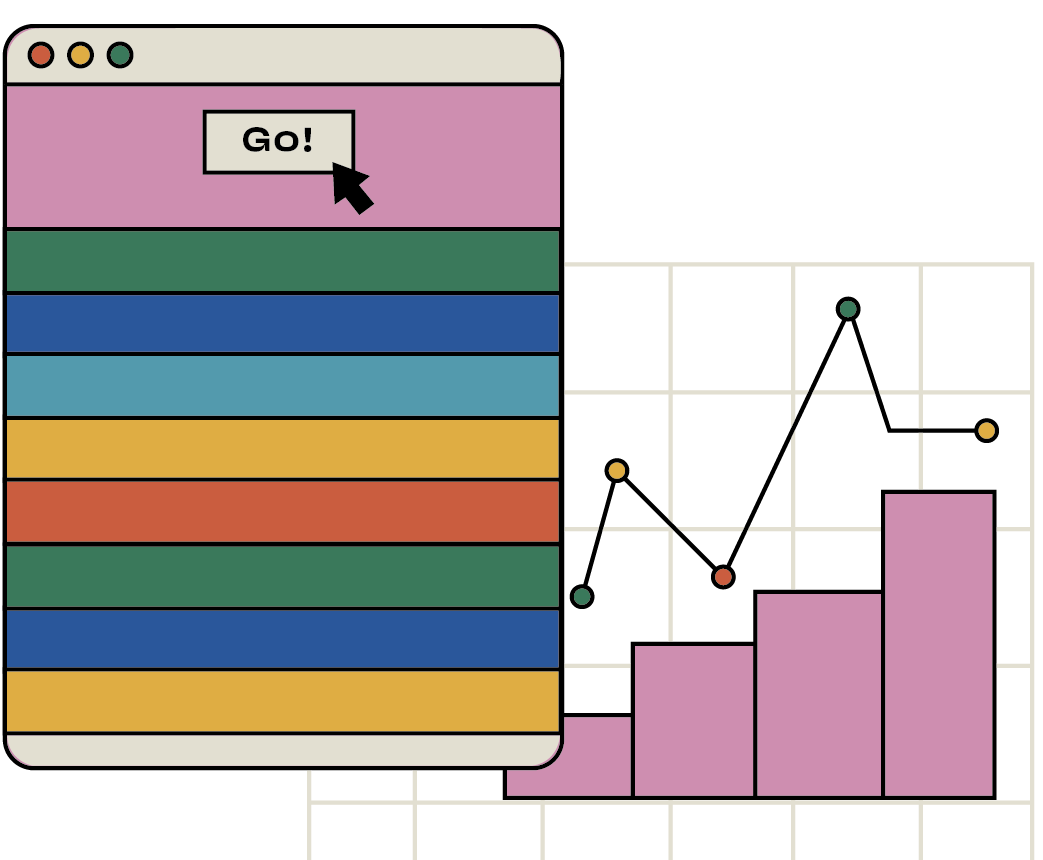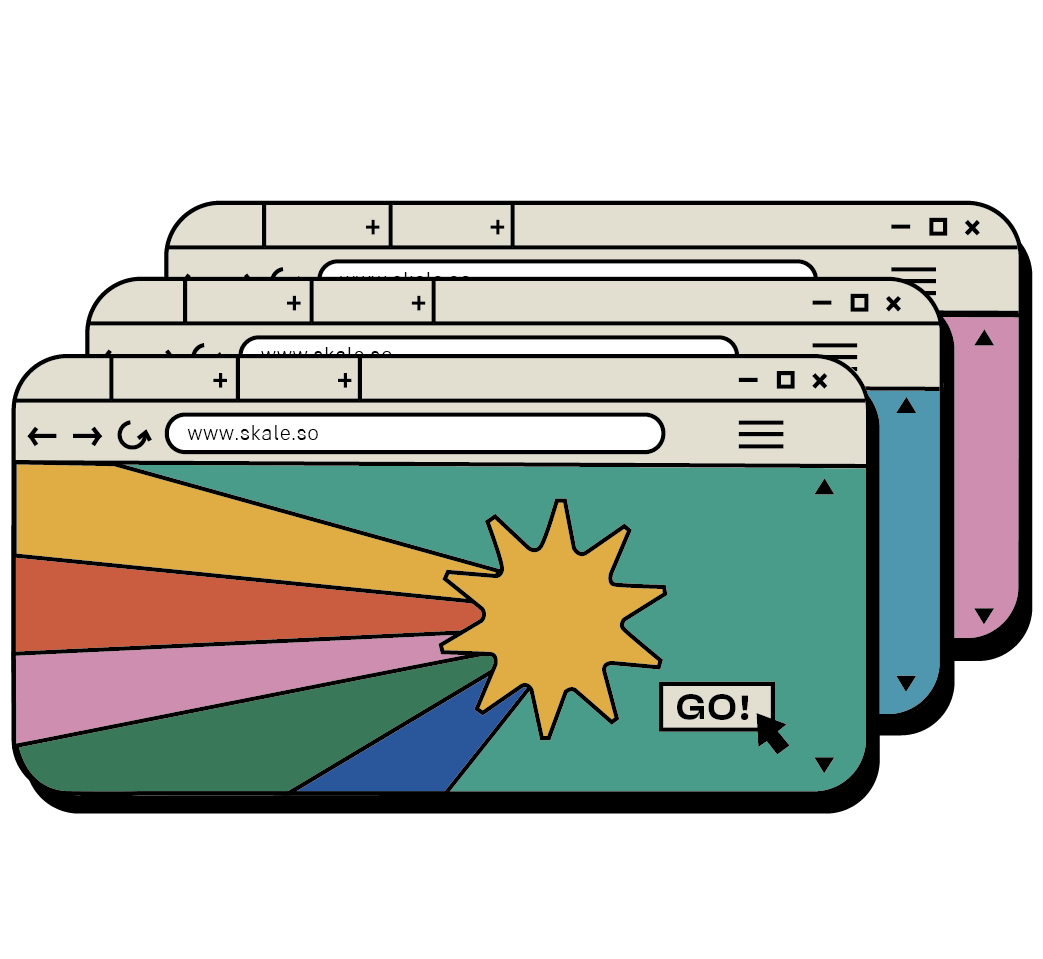
The best 8 SaaS marketing events to attend in 2024
In this comprehensive guide, we'll showcase some of the best SaaS marketing events in 2024 that you shouldn't miss.

The forecast compound annual growth rate for SaaS is 18%—every year the industry is expected to be 18% larger than the year before. There are lots of opportunities for SaaS businesses to strike gold, but they won’t be doing it without some pretty skilled SaaS product marketing.
Let’s take a look at exactly what we mean by that.

SaaS product marketing is the process of bringing your SaaS product to market—it refers to the effort made to promote and sell SaaS products and services. It’s an ongoing effort to acquire new customers and establish your SaaS brand within the industry.
SaaS product marketing is responsible for developing positioning, messaging, competitive differentiation, and enabling the sales and marketing teams to ensure everyone’s on the same page. The ultimate goal is to create and close opportunities.
Now, we wouldn’t blame you for sitting there thinking: why can’t I just hire a standard marketer and be done with it?
Read on for the answer.
Put simply, SaaS product marketers are product experts—they know every single detail about your product. Like all product marketing teams, they lie between the product team and the marketing team—giving them in-depth knowledge on your SaaS services and their value.
SaaS products, unlike other products, aren’t a one-time purchase. SaaS customers consider their software choice on a monthly basis—SaaS businesses need to ensure they stay on top of SaaS product marketing to enjoy consistent MRR.
Non-SaaS product marketing only has to focus on acquiring customers—SaaS product marketing has to focus on acquiring and retaining customers. It’s an ongoing effort that has major implications for SaaS product growth.
Plus, marketing software is different from marketing a product. You can’t create the same flashy promos for SaaS products as you would another product—it’s about communicating the value of your services.
So, how do you go about SaaS product marketing?

Skale’s team has created product-led SEO strategies for 30+ SaaS brands, increasing revenue by over 170% for our clients
Learn moreA SaaS product marketing plan is something you want to get right—but there are lots of ways to go about it. Each platform has different advantages, and not all content works on every platform. You want to pick and choose what you share and where—and consider how you can leverage each platform to support your SaaS marketing efforts.
Social media is often dismissed as solely a platform for B2C businesses to market their products. Don’t fall into the trap of believing this—83% of B2B marketers advertise on social media. It’s second only to search engines in terms of success.
When you consider that over 3.6 billion people use social media, it’s no surprise that this is a key channel for companies worldwide.
Social media can be used in a number of ways to market your SaaS product. Take a look at how you could use social media to propel your business’ marketing strategy:
You want to get a comprehensive view of your social media efforts with adequate tracking and reporting. It’s important to monitor the success of your social media marketing campaigns to ensure you’re headed down the right track.
Here are some popular tools that social media marketers use to manage and report on their social media campaigns:
You could also do this through the social network’s own analytics features, like Instagram Insights or Twitter Analytics. These provide a summary of your profile, as well as insights into impressions, reach, and mentions.
Let’s take a look at how email can support your product marketing efforts.
SaaS email marketing for your product is different to email marketing efforts for non-SaaS products. Yes, you’re promoting your SaaS product via email, but you’re also focusing on retaining current users. This is a great way to reach customers, but it’s essential to understand the different types of email marketing:
Building your email list is half the task—you want to reach your target audience as effectively as possible. Get creative with where you place your email list sign-up CTAs, segment your list effectively, and fine-tune your email marketing strategy with automation tools.
Viewers retain 95% of a message when they watch it in a video, compared to 10% when reading it as text. That’s a big difference—video marketing is a key opportunity for your SaaS marketing strategy.
SaaS companies have some unique opportunities when it comes to video content marketing. You’ve got ample features and capabilities to highlight and communicate, which helps with both customer retention and lead generation.
You want to create videos that guide viewers through your product and its solutions, and how it can help them within their roles and job-to-be-done. You can also create educational video content by repurposing your blog and social media content. Either way, you’ll need to ensure your videos remain customer-centric and relevant to their story, not product-centric!
Investing in search engine optimization is a big step for SaaS businesses- but it can come with a great marketing ROI. The initial cost and long-term approach can be off-putting—but it’s a must for growing businesses. Plus, the sooner you start, the better. In fact, 61% of marketers say improving SEO and growing their organic presence is their top inbound marketing priority.
There are three types of SEO you want to consider for your SaaS company:
Through a combination of these three approaches, SaaS marketers can improve the top four ranking factors: direct website visits, time on site, pages per session, and bounce rate. By improving these, SaaS product marketers can expect to see big improvements in domain authority, and ultimately product sales.
Last, but by no means least, on our list of SaaS product marketing channels. It’s long been the primary focus of marketers and it’s still a popular approach—no surprise considering paid ads have a 200% ROI.
Paid ads aren’t just those you see on google—there are plenty of places you can pay for your product to be seen. LinkedIn, Facebook, Capterra—all of these offer advertising space for companies to promote their products. Knowing where your target customers spend their time is an essential consideration for your PPC efforts.
Paid ads also offer a great opportunity for ‘retargeting’, which consists in reaching out to those who already interacted with your website in some way. It’s an effective product marketing strategy—customers are up to 70% more likely to buy your product when you use retargeting.
The debate around SEO vs PPC has been ongoing, but the approaches should be used in unison. Paid ads—a foundation of the AARRR framework—can drive your initial clicks, but a lot of product marketers are moving to the RARRA framework. RARRA focuses on retention over acquisition for business growth.
Plus, your market research and B2B keyword research helps inform both strategies—let your SaaS marketing team have a crack at both.

Learn how to create a P&L statement that aligns your marketing goals with growth plans
Read the guideNow that we’ve seen the various ways in which we can approach SaaS product marketing, let’s see some real-life examples that have done wonders for their creators.
MailChimp is one of the biggest names in email marketing, but when they saw the chance to be more than that—they took it. They’ve recently expanded to become an all-in-one marketing suite for small businesses.
What MailChimp did right was identify how customers used their tools to grow their business. From then on, MailChimp has focused on highlighting the ways in which the tool helps small businesses affordably grow.
They know that whilst users may love their in-depth analytics features or design studio, their main focus is to grow their business. They successfully employ the is-means-does framework to highlight not what their product is, but what it means for businesses—an opportunity for small businesses to grow.
So, that’s what they lead with—as we can see with their ‘growing businesses‘ landing page.
WeTransfer is another great example of SaaS product marketing strategies—this time with a focus on converting existing customers to paying customers. They do this by optimizing their use of the loading screens users encounter when uploading files to their site. Many users don’t even realize there’s a paid version of the software, so this is an effective way to communicate its value and features.
When uploading files, users are presented with screens similar to the above. Non-intrusive content marketing aims to inform users of the paid options available to them whilst they wait for their files to upload. The benefits of this are two-fold:
The copy is playful and inviting, and brings in more marketing qualified leads as they’re already using the product. It’s fighting churn while shooting for paid activation and retention. A triple threat.
Userpilot’s content marketing efforts are a great example of a content-lead product marketing strategy. Content marketing helps build brand awareness, drive organic traffic, and increase lead generation.
Check out this article on Content Marketing Metrics & KPIs.
By creating high-quality, industry-specific content, Userpilot is able to engage users within their target industry and audience. It’s also a great way to gain high-value SaaS backlinks to their website—standard practice dictates that anyone using their research should link back to the source: Userpilot.
The data collected—which they’ve collected through their own business operations—can be used by other marketers to back up their claims.
To finish off our deep dive into SaaS product marketing, let’s take a look at some top tips from around the industry.
The specific campaigns you develop depend on your approach to growth—AARRR vs RARRA. We recommend product-led businesses, such as SaaS companies, approach growth with the RARRA framework.
RARRA puts customer retention first—the idea is that happy customers lead to more referrals and greater acquisition. You can prioritize retention through a variety of methods, such as simple in-app tutorials, comprehensive user onboarding, and improved user adoption strategies.
Get creative with your product marketing—find exciting ways to communicate and guide users towards their Aha! moments. Marketing is meant to be creative, but there’s no product where this is more important than software. The intangible nature of SaaS products makes efficiently communicating their value a key factor in the marketing process.
Freemium in SaaS is pretty common—and that’s not without good reason. Users want to ‘try-before-they-buy’, especially when software solutions can be a considerable investment. Consider your audience here—you’re likely catering to small and medium businesses with your solution.
Freemium enables users to try out your software—if they love it, you’re in a better position to up-sell your premium services than to somebody who’s never used your services.
User experience is something you need to prioritize at all stages of the sales funnel—ensure your website it’s easy to navigate. Improving UX has two main benefits for your SaaS products, such as:
Creating an enjoyable experience for all improves the way users see your product. You can help boost your ranking through UX/UI design.
Our final top tip is a big one—you want to ensure you keep an eye on how your efforts are going. There’s no way to know if your marketing campaigns are working if you don’t have a way to track and manage relevant SaaS growth metrics.
As part of this, establish some key marketing metrics and marketing tools at the start of your product marketing process, and check back on these monthly to see what’s working and what isn’t. Keep in mind that some strategies take longer to deliver results—don’t give up just because things are taking some time.
You may also like B2B SaaS Marketing Strategies.

Analyze the progress of every effort, including impact on CAC & CLV, with this guide
Get the guideProduct marketing for SaaS brands is different as it requires a greater focus on creativity and uniqueness. SaaS brands must identify their target market and cater to their precise needs with their marketing communications.
Marketing a new SaaS product requires a combination of innovative and traditional marketing strategies, including social media campaigns, email marketing, video marketing, SEO, and paid clicks. Check out more details on marketing SaaS products in the SaaS marketing playbook.
Learn more about
SaaS Marketing

The best 8 SaaS marketing events to attend in 2024
In this comprehensive guide, we'll showcase some of the best SaaS marketing events in 2024 that you shouldn't miss.

7 Best SaaS Copywriting Agencies & Services in 2024
11+ SaaS copywriting agencies that will educate your audience, boost revenue, and nurture leads.

9 SaaS Content Marketing Agencies in 2024: Reviews & Pricing
Create content that generates serious revenue when you work with a SaaS marketing agency from this list.